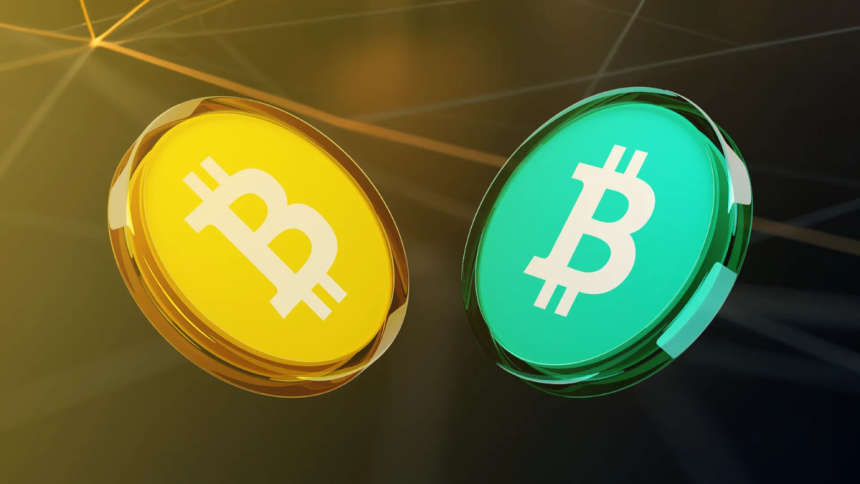Bitcoin and Bitcoin Cash started from the same blockchain. In 2017, a disagreement in the Bitcoin community led to a chain split. It was not just a technical update. There was a philosophical divide about what Bitcoin should be. This article explains what caused the split and why Bitcoin now exists in two forms.
The scaling debate – the root of the conflict
By 2016, Bitcoin was struggling with congestion. The number of users had grown fast. Blocks had a size limit of 1MB. This limit allowed only seven transactions per second. Fees spiked. Transfers slowed down. Users sometimes waited hours for confirmation.
The community split into two camps.
One group, known as “Big Blockers”, wanted to raise the block size. It would let the network handle more data and reduce processing fees. They believed it was key for mass adoption.
The other side, the “Small Blockers”, focused on preserving decentralization. They pushed for solutions outside the main chain, like Segregated Witness (SegWit) and the Lightning Network. These tools kept the base layer light and secure. They believed fast scaling would make the network less resistant to control by large players.
2017 – the year of the fork
Bitcoin activated SegWit. A group of developers and miners disagreed. They believed SegWit was a patch, not a fix. On August 1, 2017, they launched a hard fork. This date was the birth of Bitcoin Cash (BCH).
A hard fork is a permanent chain split. It happens when a group runs a different version of the software with incompatible rules. From that point, the two chains go their own ways.
All users who held Bitcoin at block 478558 automatically received an equal amount of Bitcoin Cash. The two coins share the same history before that block but have moved in different directions since.
The philosophy behind the split
Bitcoin was focused on being a long-term store of value. Supporters compared it to digital gold. They valued security and decentralization over fast payments.
Bitcoin Cash aimed to fulfill Satoshi Nakamoto’s early vision of electronic cash. BCH increased the block size to 8MB, later up to 32MB. It allowed for more transactions per block, faster processing, and much lower fees. As a result, Bitcoin processes around 7 transactions per second, whereas Bitcoin Cash can handle up to 116.
BTC developers leaned toward Layer 2 solutions. It runs on top of Bitcoin, reducing strain on the main chain. Changes in Bitcoin come slowly. The community favors caution.
BCH developers preferred direct scaling. They believed on-chain changes better-served users. They rejected SegWit and focused on usability. BCH attracted users who wanted fast, cheap transactions.
The fork created a split in the ecosystem. Each side claimed to uphold the true spirit of Bitcoin.
What happened after the fork?
Bitcoin remained a valuable and widely held cryptocurrency. It attracted institutional interest and became a symbol of digital scarcity.
Bitcoin Cash carved out a niche. Its low fees and fast confirmations made it suitable for small payments. Some merchants preferred it as a method of payment. Today, many cryptocurrency payment processing providers support both currencies to attract users from both communities.
The split also showed the limits of consensus in crypto. When talks fail, forks can happen. The debate over BCH vs BTC remains active today.
The 2017 fork was not a mistake. It was a response to deep, unresolved differences. Bitcoin and Bitcoin Cash reflect valid goals. One wants to store value. The other aims to move it. The original chain split, but the debate still goes on, in code and in vision.
Lynn Martelli is an editor at Readability. She received her MFA in Creative Writing from Antioch University and has worked as an editor for over 10 years. Lynn has edited a wide variety of books, including fiction, non-fiction, memoirs, and more. In her free time, Lynn enjoys reading, writing, and spending time with her family and friends.















